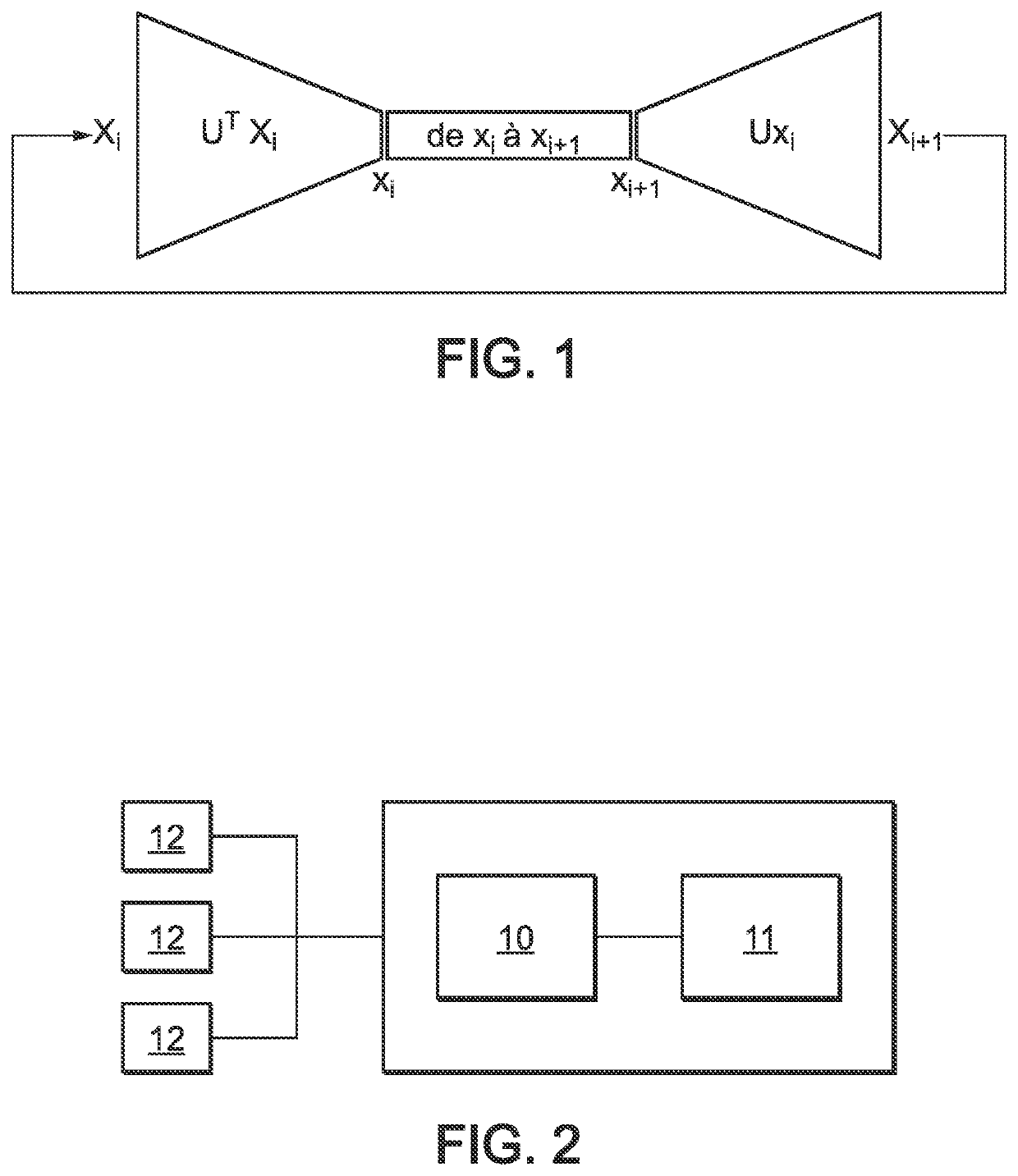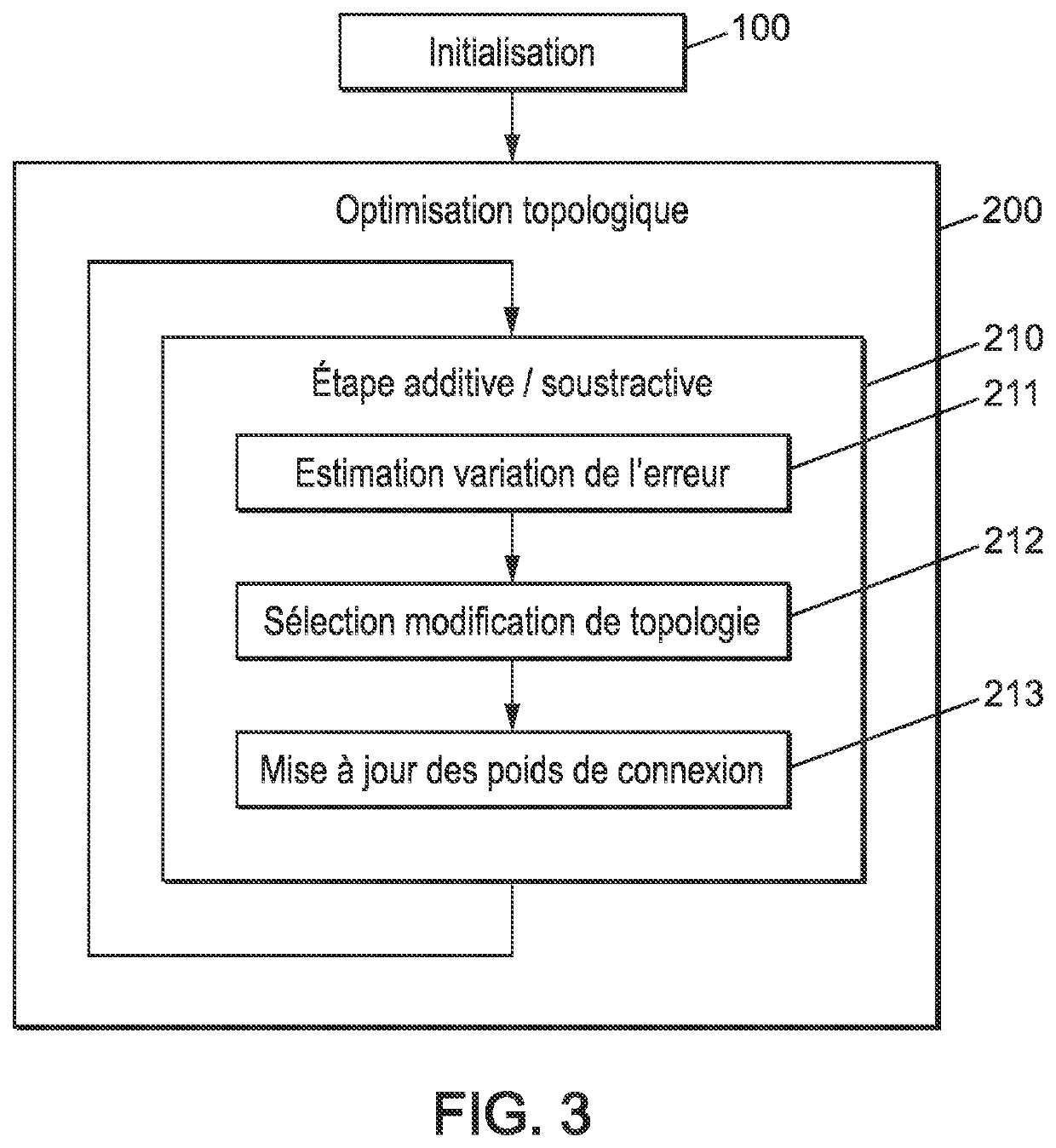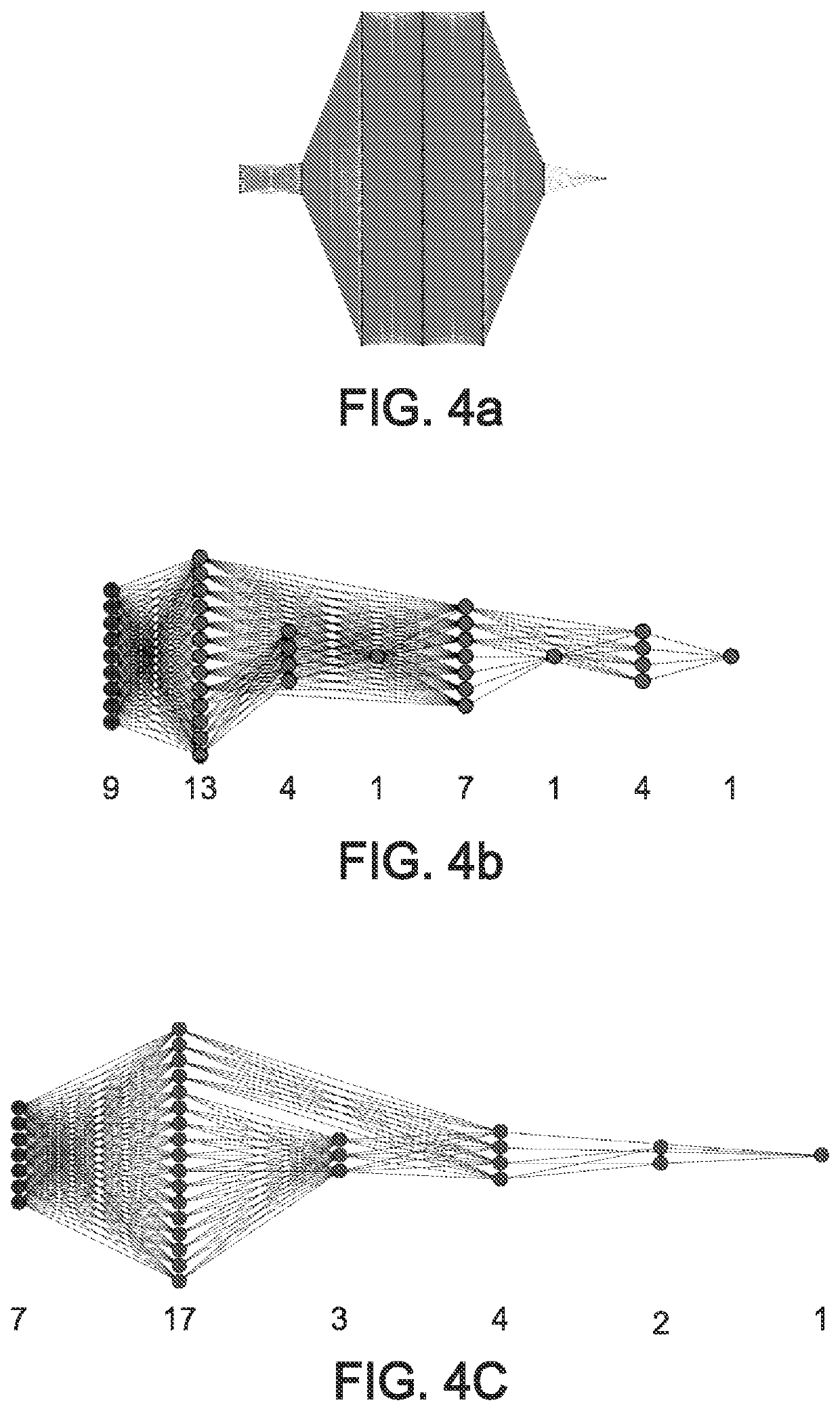Method of neural network construction for the simulation of physical systems
a neural network and physical system technology, applied in the field of learning, can solve the problems of low convergence rate, stochastic gradient descent, like gradient descent, and learning process must stop prematurely, so as to improve the stability of dynamic models, reduce computing times, and eliminate data noise.
- Summary
- Abstract
- Description
- Claims
- Application Information
AI Technical Summary
Benefits of technology
Problems solved by technology
Method used
Image
Examples
example
[0271]By way of illustration, an example of a possible application that is in no way limiting is that of modeling the melting of a solid sodium block.
[0272]Referring to FIG. 7a, consider a square container of small height that contains sodium in a solid state. FIG. 7a is a top view of this container, which is heated by an electrical resistor positioned in a corner of the container for the purpose of melting the sodium.
[0273]Three experiments are carried out. During each experiment, the resistor is respectively powered by one of the three power profiles shown in FIG. 7b. In this figure, the time in seconds is shown on the x-axis and the power delivered to the resistor in Watts is shown on the y-axis.
[0274]The response of this system is represented by nine temperature sensors 2, which solely provide the value of 0 if the temperature does not exceed the sodium melting point, and 1 if this value is exceeded.
[0275]If we denote as z, the vector formed by the nine measurements at a time i,...
PUM
 Login to View More
Login to View More Abstract
Description
Claims
Application Information
 Login to View More
Login to View More - R&D
- Intellectual Property
- Life Sciences
- Materials
- Tech Scout
- Unparalleled Data Quality
- Higher Quality Content
- 60% Fewer Hallucinations
Browse by: Latest US Patents, China's latest patents, Technical Efficacy Thesaurus, Application Domain, Technology Topic, Popular Technical Reports.
© 2025 PatSnap. All rights reserved.Legal|Privacy policy|Modern Slavery Act Transparency Statement|Sitemap|About US| Contact US: help@patsnap.com



